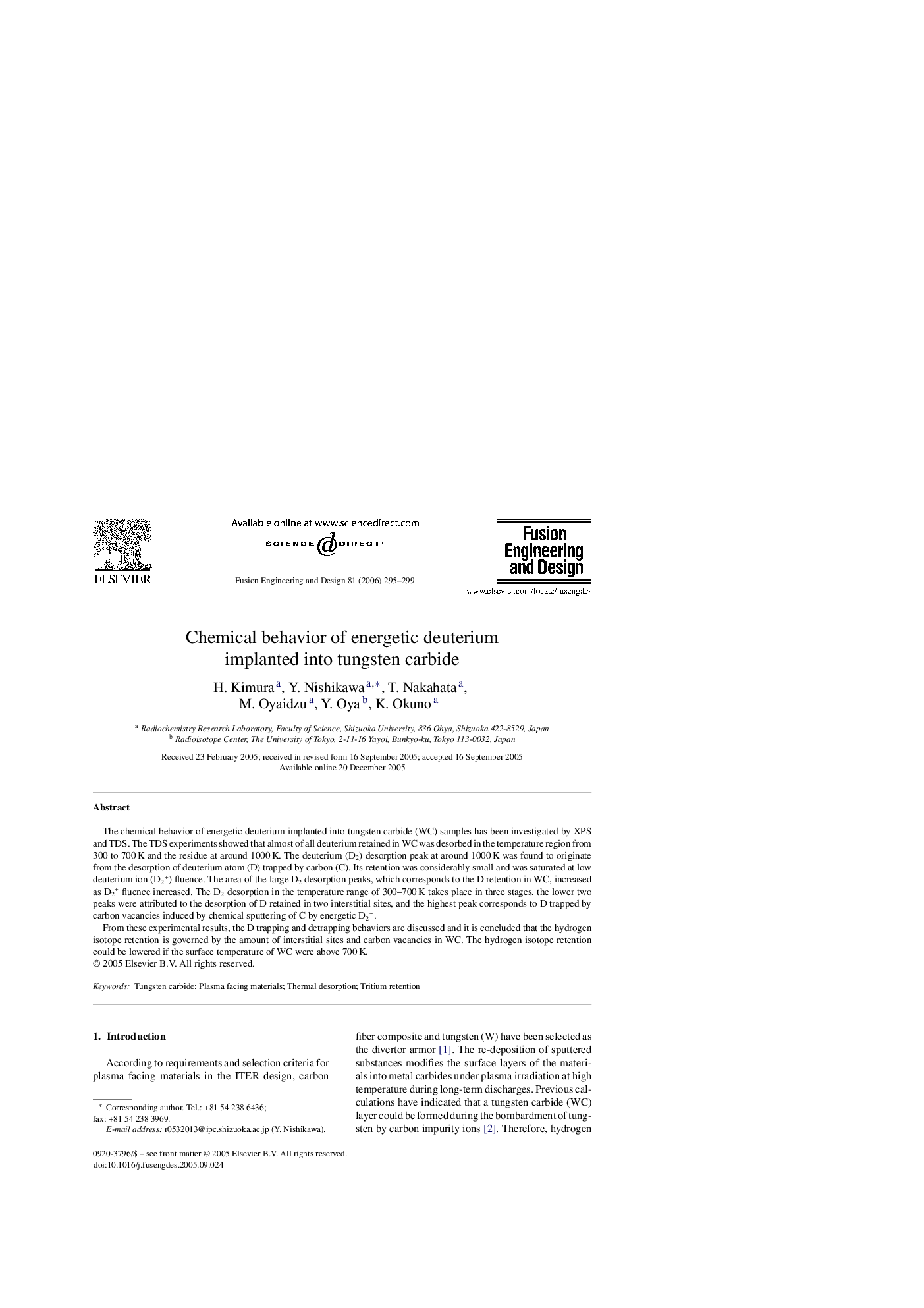| Article ID | Journal | Published Year | Pages | File Type |
|---|---|---|---|---|
| 273463 | Fusion Engineering and Design | 2006 | 5 Pages |
The chemical behavior of energetic deuterium implanted into tungsten carbide (WC) samples has been investigated by XPS and TDS. The TDS experiments showed that almost of all deuterium retained in WC was desorbed in the temperature region from 300 to 700 K and the residue at around 1000 K. The deuterium (D2) desorption peak at around 1000 K was found to originate from the desorption of deuterium atom (D) trapped by carbon (C). Its retention was considerably small and was saturated at low deuterium ion (D2+) fluence. The area of the large D2 desorption peaks, which corresponds to the D retention in WC, increased as D2+ fluence increased. The D2 desorption in the temperature range of 300–700 K takes place in three stages, the lower two peaks were attributed to the desorption of D retained in two interstitial sites, and the highest peak corresponds to D trapped by carbon vacancies induced by chemical sputtering of C by energetic D2+.From these experimental results, the D trapping and detrapping behaviors are discussed and it is concluded that the hydrogen isotope retention is governed by the amount of interstitial sites and carbon vacancies in WC. The hydrogen isotope retention could be lowered if the surface temperature of WC were above 700 K.
